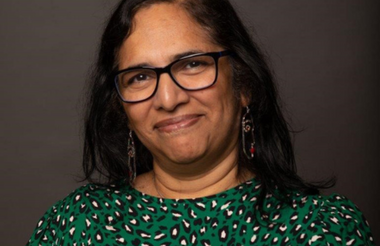Charities can attract more donations by strengthening their strong environmental, social and governance (ESG) practices, a charity sector expert has said.
Speaking yesterday during a webinar on financial sustainability and outcome metrics, Hobby Dean, not-for-profit senior solution consultant at Sage Intacct, said that the more ESG credentials charities show, “the more people are starting to engage”.
The webinar, hosted by Charity Finance, was part of Charity Finance Week (2-6 October), the magazine’s annual week of face-to-face and virtual events, content and thought leadership initiatives for charity finance professionals.
ESG credentials are important
Dean said that although larger charities were the first to adopt ESG practices in the charity sector, “it’s now starting to ripple through” to smaller organisations.
“The more ESG credentials you show, the more people are starting to engage. For example, the Royal Shakespeare Company (RSC) had a relationship with BP and as soon as they severed their relationship, because people were saying: ‘I’m not happy about your relationship with an organisation that does fossil fuel,’ funding went straight up.
“Lots of organisations, donors, funders and individuals, in general, are now contributing to organisations that have more of an ESG agenda. So it’s important that you think about the environment.”
RSC ended its partnership with BP in 2019 after being criticised by young supporters.
The charity’s income from donations and legacies more than doubled to £5.73m in the year to March 2020 and increased again to £12.8m the year after before falling to £2.88m in 2021-22.
Ending the silo approach to metrics
Dean added that from an ESG perspective “nobody’s expecting a Big Bang” or “massive things” as long as they can “control and manage the metrics”.
“It can be something simple like: ‘We stop people printing and doing so much with the photocopier, we go and get fair trade items.’ It’s also about what is your board diversity looking like? How is your staff retention? How are you educating your staff? What about socially? How are you managing employee development and things like that? It’s really important that those metrics start to come into play. There’s enough evidence in the market that it’s now capturing more donors and more donors are now ethically choosing who they want to put the monies with.”
Dean said one of the biggest issues she has seen in the sector is the silo approach some charities take to outcome metrics, be they the cost of services or the number of service users.
“Leadership do what they want to do, finance will do what they need to do and fundraising work in the way that they want to work. In truth, they all need to work together, they all need to support each other for the greater goal of the charity,” she said.
“The most important thing is: what resources do you need? If you weren’t capturing the metrics, how would you know that? And the most important thing is collaboration required between all key stakeholders because I’ve gone to meetings even six months ago where leadership have said: ‘That’s nothing to do with me, I’ll leave that to finance, our fundraising does that.’
“You’ve all got to know the common agenda because funders and donors are trying to see how are you measuring your performance and how well do you know your own organisation in that situation?”
Sharing data internally
Dean pointed out that, although collecting the right data is key for charities, it is also important to communicate performance to internal stakeholders.
She said: “The most important thing that we all forget – and I still hear this from a lot of charities – you’re so focused on doing some amazing work, you forget to promote yourself internally.
“It’s really important the data that you use is not just here for your annual reports, your outlets in social media and things like that. It’s to remind your team how wonderful they are and the differences they’re making, whether they’re providing blood to help with the blood donor programme and helping individuals, or whether your contribution has meant we can look after this many more clients. It’s really important because internal stakeholders need to know they are making a difference and that carries forward.”
Related articles












